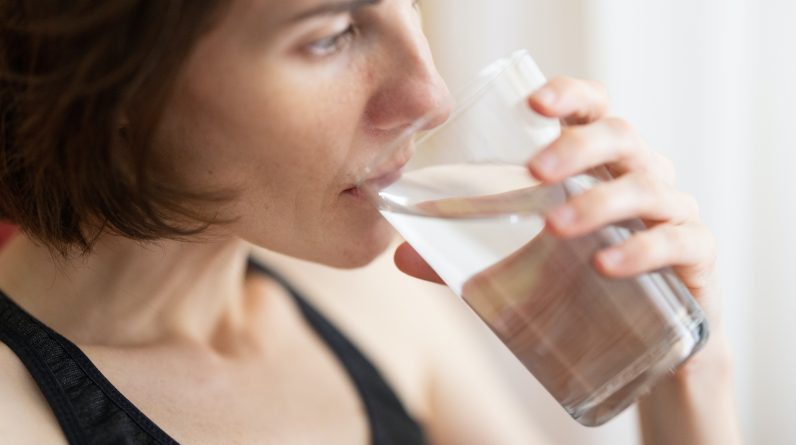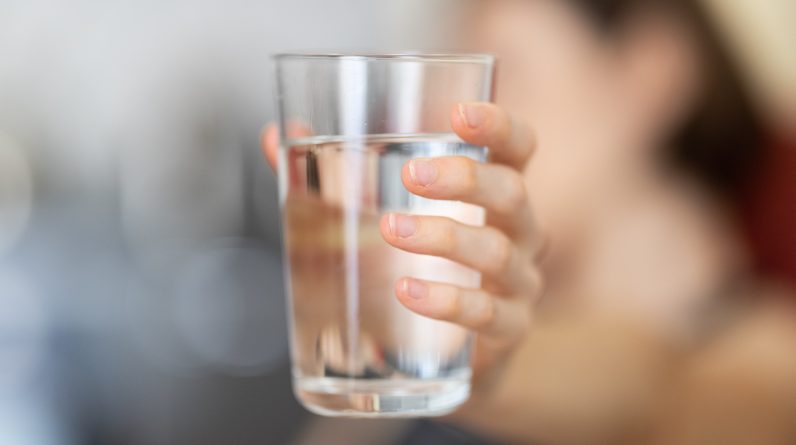
Introduction to Distillation Water Filtration Systems
Water is undeniably one of the most vital resources for sustaining life on our planet. We depend on it not only for drinking, but also for cooking, cleaning, and countless other daily activities. However, with increasing pollution and contaminants in water sources, ensuring its purity has become a pressing concern.
This is where water filtration systems play a crucial role. The purpose of water filtration is to remove impurities and harmful substances from the water we consume.
Whether it’s chemicals, microorganisms, heavy metals, or sediment, these unwanted elements can pose serious health risks when ingested. Filtration systems act as a protective barrier that purifies the water by separating these impurities from it.
One notable method of water purification is distillation. This ancient technique has been used for centuries to separate liquids based on their boiling points.
Distillation works by heating the contaminated water until it reaches boiling point and transforms into steam or vapor. The vapor is then cooled down to condense it back into liquid form—pure and free from impurities.
Overview of distillation as a water purification method
Distillation has long been hailed as a highly effective method of purifying water due to its ability to remove both organic and inorganic contaminants effectively. Unlike some other filtration methods that rely on physical barriers or chemical reactions to cleanse the water, distillation removes pollutants through their separation during phase changes. The process involves three main steps: evaporation (or boiling), condensation (cooling), and collection.
The contaminated water is heated in a boiling chamber until it evaporates into steam or vapor—leaving behind most solid particles and large molecules in the process. The vapor then travels through a condenser where it cools down and returns to its liquid state, leaving behind the impurities.
The purified water is collected in a separate container. One of the significant advantages of distillation is its effectiveness in removing various pollutants, including heavy metals, toxins, bacteria, viruses, and even radioactive elements.
Because it relies on physical separation rather than chemical reactions or filtration through membranes or activated carbon, distillation can provide a high level of purity. However, it’s worth noting that certain volatile organic compounds with lower boiling points might not be fully eliminated through this method alone.
Understanding the Basics of Distillation
Definition and Principle Behind the Distillation Process
Distillation, my curious readers, is a fascinating process that has been used for centuries to purify liquids. It works on a simple but ingenious principle – separating different components based on their boiling points.
You see, when a liquid is heated, it undergoes evaporation, transforming into vapor. And guess what?
Each substance in that liquid has its own distinct boiling point! So, by carefully controlling the temperature, we can cause certain substances to evaporate while leaving others behind.
But how does this lead to purification? Well, the vapor that rises from the heated liquid is then cooled down and collected separately.
This cooling process is called condensation, where the vapor turns back into its original liquid form. The beauty of distillation lies in the fact that impurities in the liquid often have higher or lower boiling points than water itself!
As a result, those pesky impurities don’t make it through to the vapor stage and are left behind during evaporation. Isn’t nature remarkable?
Explanation of Evaporation, Condensation and Collection Steps Involved
Now that we understand the principle behind distillation let’s dive deeper into its marvelous steps: evaporation, condensation, and collection. Evaporation occurs when heat is applied to our chosen liquid—usually water in this case—and it transforms into steam or vapor with eager excitement!
During this phase change from liquid to gas (I know it sounds like magic!), impurities with higher or lower boiling points get left behind like unwanted party guests who couldn’t quite keep up. Then comes condensation—the moment when our vapor cools down and returns back to its liquid state after some time spent frolicking in gaseous freedom.
This cooling-down process happens in a separate chamber called a condenser, where the vapor is treated to a refreshing chill in order to coax it back into liquid form. After this mesmerizing transformation from liquid to gas and back again, the purified water is collected in a container, ready for you to enjoy its pristine taste and benefits.
Just think of it as nature’s way of giving us a fresh start—a chance for water to leave behind all its unwanted companions and become pure again. So there you have it, my dear readers!
The remarkable process of distillation unfolds before our eyes: evaporation separates the good from the bad, condensation brings everything back down to Earth, and collection offers us the gift of pure water. It truly is a marvel worth celebrating!
Components of a Distillation Water Filtration System
Boiling Chamber: The Heart of Distillation
Picture this: a sturdy, stainless steel chamber sitting proudly atop your trusty distillation water filtration system. This is the magnificent boiling chamber, where all the magic happens. Its primary function is to heat the contaminated water to its boiling point, initiating the evaporation process that separates impurities from the liquid.
With its robust construction and reliable heating mechanism, this chamber stands as the cornerstone of distillation. Inside the boiling chamber, a heating element or flame works tirelessly to bring the water to a rolling boil.
As this occurs, contaminants such as bacteria, minerals, and other unwanted substances remain trapped in their original liquid form while water molecules escape into vapor form. The boiling chamber often features safety mechanisms like temperature control systems and pressure relief valves to ensure optimal conditions for distillation while avoiding any mishaps.
Condenser: Cooling Down Vapor with Finesse
Once transformed into vapor within the boiling chamber, our purified water-in-the-making needs some tender love and care before it can be ready for consumption. Enter the condenser—an integral component responsible for cooling down that warm vapor and bringing it back to liquid form. The condenser essentially acts like a superhero cape for our vaporized water molecules.
It provides them with a chilly environment where they can regain their composure and return to their liquid state through condensation. This marvelous contraption typically consists of tubes or coils made from materials such as copper or stainless steel that facilitate efficient heat transfer.
To cool down that sizzling hot vapor effectively, cold water circulates around these tubes or coils while warm vapor passes through them. As contact occurs between these contrasting temperatures, an enchanting transformation takes place—the vapor relinquishes its heat energy to the cold surface of the condenser and gracefully transitions back into pure, liquid water droplets.
Collection Container: The Treasure Chest of Purified Elixir
After the vapor has been successfully tamed and converted back into its liquid form, it is time to corral this precious elixir of life. Here enters the collection container, the final stop on our journey towards purified water.
This container serves as a safe haven for our newly condensed and filtered water droplets. You can imagine the collection container as a welcoming harbor where all the distilled purity gathers.
It typically takes the form of a reservoir or a storage tank with an outlet through which you can access your much-awaited purified water. Some advanced distillation systems may even feature additional filtration mechanisms within this container to provide an extra layer of refinement.
Once inside the collection container, your purified water awaits, patiently anticipating its ultimate purpose—drinking, cooking, or whatever you desire. This is where science and technology converge to bring forth clean and refreshing hydration that is free from impurities and ready for your consumption.
So now we have explored these remarkable components—the boiling chamber where evaporation begins, the condenser that cools down vapor with finesse, and finally, the collection container that holds our precious purified water. Let’s dive deeper into understanding how these pieces come together in harmony to create a reliable distillation water filtration system.
Step-by-Step Process of Distillation Water Filtration Systems
Preparing the water: Importance of using clean, unfiltered water as input
Ah, the first step in the intricate dance of distillation. Before we even think about heating things up, it’s crucial to start with clean and unfiltered water.
Why, you might ask? Well, my curious friend, because any impurities present in the water will also find their way into the vapor.
And that’s not what we want when aiming for crystal-clear purity! So make sure to use good-quality water as your starting point.
Boiling the water: Heating process to initiate evaporation
Now that we have our pristine H2O ready to go, it’s time to crank up the heat and get things boiling! The process begins by subjecting our water to high temperatures, enticing it to transform into gaseous form by evaporating.
Picture a pot on a stove getting hotter and hotter until little bubbles start dancing on its surface – that’s exactly what we’re aiming for here. To achieve optimal results during this stage, temperature control is key.
We don’t want things too hot or too cold; instead, we seek that elusive sweet spot where vaporization occurs efficiently without compromising quality. It’s like finding just the right balance between a simmer and a vigorous boil – a delicate dance between science and art.
With heat applied and evaporation underway, something magical happens: volatile contaminants bid farewell to their watery home and take flight with the rising vapor. Leaving behind impurities that can’t withstand such steamy conditions is an essential part of this purification tango.
Condensing the vapor: Cooling down and converting vapor into liquid form
After all that excitement of boiling and vaporizing, it’s time for some cool elegance – say hello to the condenser! This nifty apparatus plays a crucial role in our distillation process by cooling down the vapor and coaxing it back into liquid form. The condenser works its magic by providing a cooler environment for the vapor to encounter.
As the vapor approaches this chilled zone, it rapidly loses its fiery spirit and gracefully transforms back into pure liquid form, akin to a ballet dancer slowing down after a breathtaking leap. During this enchanting transformation, any impurities that managed to hitch a ride with the vapor are left behind.
The condenser ensures that only pristine droplets make it through, falling delicately into the awaiting collection container. It’s like nature’s own purification system, turning steamy chaos into serene clarity.
Conclusion
And there you have it, dear reader – an intricate journey through the mesmerizing world of distillation water filtration systems. From preparing clean water and boiling it to carefully controlling temperatures and condensing vapors, each step plays a vital role in delivering us that ultimate elixir of purity.
So next time you take a sip of refreshing distilled water or marvel at its crystal-clear clarity, remember the fascinating process behind it all. Let this knowledge inspire you to appreciate not only the science but also the artistry involved in creating something so essential yet often taken for granted – pure water.
In our quest for purity and wellness, let us raise our glasses (filled with distilled water) in celebration of science’s triumph over impurities! Cheers to clear minds and hydrated souls!


